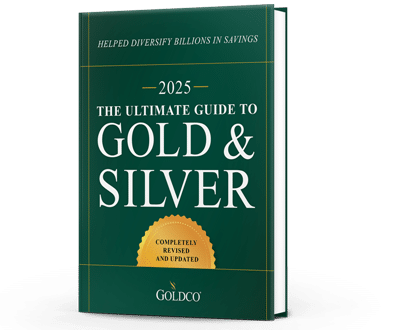6 Indicators of a Potential Recession
It seems that in the media today there are more and more mentions of the dreaded R-word: recession With growing economic uncertainty, the threat of potential recession seems to be growing as...
Economy

One of the signs that many market analysts look for to evaluate the chances of recession is an inverted yield curve. The yield curve is created by graphing the interest rates of Treasury securities. Normally the slope curves upwards, as yields increase for the longer maturity Treasuries. But during times of market turmoil and recession fear, the yields on short-term Treasuries will often exceed those of long-term Treasuries, throwing the slope of the curve off. You can even graph the spread between various Treasury maturities, and when the spread goes negative it’s an indicator of a yield curve inversion.
An inverted yield curve means two things. First, it’s an indicator that investors are nervous about the future and so are flocking into longer-dated Treasury bonds as a safe haven asset. Secondly, it means that investors foresee lower interest rates in the medium term due to central banks pushing interest rates down, thus they’re content to purchase longer-dated Treasuries at lower yields than short-term Treasuries. Both of those are indicators that markets are nervous and are afraid of imminent recession.
Yield curves have been inverted for months, but not the key indicator that most analysts look for, which is the spread between 2-year and 10-year Treasuries. Instead, the first inversions in March saw the 10-year yield falling below those of the 52-week and shorter Treasury yields. Since then the yield curve inversion has grown even stronger, with yields on 10-year Treasuries falling as much as 60 basis points below the yields on 4-week Treasuries. Even yields on 30-year Treasuries are lower than yields on 4-week Treasuries. And, most importantly for many analysts and economists, the 2-year/10-year curve finally inverted in late August, the key indicator that many analysts were looking for.
Ultimately it’s not the particular relationship between any two Treasury securities that determines how important the recession risk is, it’s the fact that the yield curve has inverted at all. That’s an indicator of the fear that is gripping markets, a fear that hasn’t subsided at all. And that fear isn’t misplaced either.
There’s a growing sense that the economy and the stock market are headed for a terrible downturn soon. With a deepening trade war, slowing manufacturing, and lackluster job growth, the wheels of the economy are grinding to a halt. The only things keeping stock markets buoyed are massive amounts of stock buybacks and wishful thinking. But smart investors know that can only go so far.
That’s why so many investors have been flocking to gold, which has been a safe haven asset for investors for centuries. Only gold can provide investors with the peace of mind that their assets are safe and secure. By investing in gold, investors not only can keep their assets safe, but they can also ensure that their investments continue to gain in value. As investors during the financial crisis witnessed, gold can perform really well when stock markets plummet. If you’re worried about the safety and security of your investments, you owe it to yourself to invest in gold today.

